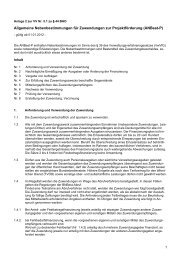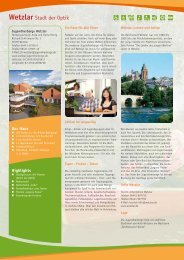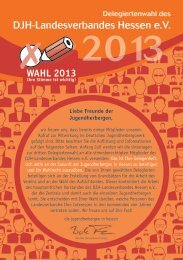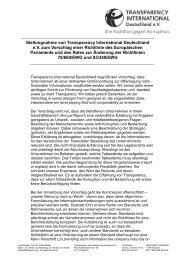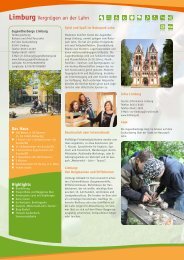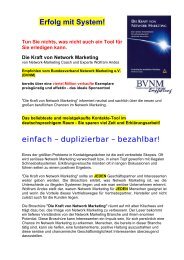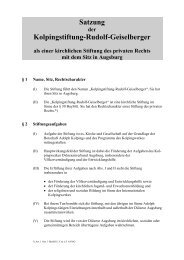REPA Booklet - Stop Epa
REPA Booklet - Stop Epa
REPA Booklet - Stop Epa
You also want an ePaper? Increase the reach of your titles
YUMPU automatically turns print PDFs into web optimized ePapers that Google loves.
PART FOUR<br />
of Origin that have to be met to qualify for the quotas, in particular definitions of the origin of vessels, the width of<br />
territorial waters, origin of catches and ‘wholly obtained’ products. The Commission has promised to review<br />
them as one way to improve market access for ACP fish products. There is also a stand off over the definition<br />
of territorial waters: the Commission says 12 nautical miles, while the Pacific Islands argue for the 200-mile<br />
Exclusive Economic Zone.<br />
Is the tuna preference being challenged in the WTO?<br />
It is caught up in the bigger challenge to Lomé preferences. The value of the preference is also under attack<br />
from bigger, more competitive tuna fishing countries. As part of the deal for securing a WTO waiver until 2008,<br />
the Commission gave the Philippines and Thailand preferential market access to Europe for a fisheries quota at<br />
a tariff rate of 14%, rather than 24%. Many predict that this will become the European Union’s new across-theboard<br />
tariff rate, making it harder for Pacific exporters to compete. Fisheries subsidies are also under attack in<br />
the WTO Doha negotiations and the ACP countries have pleaded for special consideration of the impact on their<br />
fisheries.<br />
“We have a biological<br />
problem, there are too<br />
many boats taking too<br />
many fish. It also<br />
spawns an economical<br />
problem where we have<br />
legitimate fleets being<br />
forced out of business<br />
by the pirate fleets or<br />
the non-conformists.”<br />
(Grahame Southwick,<br />
owner of Fiji Fish, 2004)<br />
How might fisheries be dealt with in the Economic Partnership Agreement negotiations?<br />
Given the migratory nature of tuna fisheries and the need for costly infrastructure, a regional approach makes<br />
sense. But those Islands that are tuna-rich and already have bilateral deals with the European Union have little<br />
reason to pool the resource. As with sugar, an Economic Partnership Agreement without fisheries may fall short<br />
of the requirement to cover ‘substantially all trade’. The alternative is to develop a subsidiary Fisheries Partnership<br />
Agreement that includes development funding and other support, as foreshadowed in the Pacific Islands<br />
strategy. That could also come with risky trade-offs. To attract foreign investment to local processing plants,<br />
governments may be asked to guarantee the security and possibly the profitability of those investments.<br />
Depending on the nature of these guarantees, foreign companies could challenge government policies or laws<br />
that reduce the value or profitability of their operation, even if those measures have a sound developmental,<br />
cultural or conservation rationale. They may also be asked to promise not to give preference to local firms,<br />
require a certain amount of local processing or employment, or insist on joint ventures. It is important to<br />
remember that these may not be specific to an agreement on fisheries; the European Commission is likely to<br />
insist on them as basic principles in the umbrella Economic Partnership Agreement.<br />
How would a Fisheries Partnership Agreement link to other aspects of the negotiations?<br />
According to The Way Forward a worthwhile fisheries agreement must deliver more benefits to the Pacific<br />
Islands and European Union than current arrangements. It would be linked to trade in goods, trade facilitation<br />
and promotion, and foreign investment and have improved Rules of Origin. This reflects the broad ACP<br />
insistence that Economic Partnership Agreements must involve genuine development, not just market access.<br />
Is the Commission likely to accept the Fisheries Partnership Agreement option?<br />
If the Commission thinks the Economic Partnership Agreement negotiations aren’t offering enough on market<br />
access, services and investment, or if the Pacific wants too much in return, it may be happy to get as much as<br />
it can through bilateral deals in areas of particular interest, notably fisheries. How far the Commission would<br />
accept the ‘development’ side of the package would probably depend, yet again, on what precedents it sets.<br />
Would this approach really promote development for Pacific peoples?<br />
The hope is that people will find jobs in the new fish factories and on ships. Balanced with this is the experience<br />
in many countries that women workers leave their villages to take low paid jobs in the towns with huge impacts<br />
on their families, communities, culture and the sustainability of the subsistence economy. Those impacts intensify<br />
if the foreign investors decide the venture isn’t profitable enough and leave. These risks haven’t been assessed.<br />
Nor it seems, have the environmental impacts. The fishery is one of the Pacific’s most precious resources. It<br />
sustains the livelihoods of most Pacific people. Fish stock, biodiversity and the marine ecosystem need to be<br />
protected from over-exploitation and destructive fishing practices. If fisheries form part of the bigger Economic<br />
Partnership Agreement negotiations, there is a risk they would become the subject of trade offs, with no<br />
assessment of the consequences. The fisheries also face pollution and damage from other commercial activities,<br />
such as factories, tourist resorts, shipping and new ports. These fall within other parts of the Economic Partnership<br />
Agreement negotiations that have no impact assessments either.<br />
A People’s Guide To The Pacific’s Economic Partnership Agreement 61



